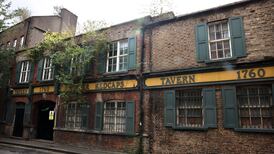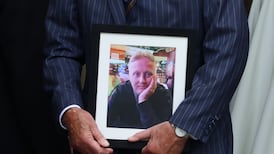Proposals to take traffic out of Dublin’s Parliament Street, which could be a mirror of Capel Street on the opposite site of the Liffey, will be presented to Dublin city councillors on Monday.
Cars were banned from Parliament Street and Capel Street, which face each other over the river Liffey at Grattan Bridge, on weekend evenings in the summer of 2021. The council subsequently decided to make the Capel Street car-free zone permanent, but had retained traffic on Parliament Street, in part due to its use by buses.
The council last summer again trialled the pedestrian and cycle-only zone on Parliament Street on Thursday, Friday and Saturday evenings from 6.30pm to 11pm. It is now planning to introduce permanent measures to eliminate or significantly reduce traffic on the street.
Council engineers will on Monday present three options to councillors. One option is to make the street “traffic-free”. It is likely that it would be done in two sections, one between the quays and Essex Street East, the only cross street though Parliament Street, and a second section between Essex Street East and City Hall. A through route on Essex Street, from west to east, would be kept open to traffic to allow access to disabled bays, the District Court at Dolphin House, the Clarence hotel, and for deliveries and resident access.
READ MORE
Various options
This option would be the most similar to Capel Street where the majority of the street is traffic-free, but it is bisected by the Luas line and traffic at Abbey Street and ends at Strand Street.
A second option would be to make Parliament Street a public-transport-only route: under this option private cars would be banned but buses, taxis and cycling would be permitted. Deliveries would be allowed up to 11am.
Another option would see the street reduced to one traffic lane: the footpath could be extended on each side by approximately 1m and the carriageway reduced to one lane with some indented loading bays provided. This is seen as the least likely as the curvature of the road may mean it would not be suitable for a footpath extension without “significant civil works”, the council said.
The report to councillors shows all vehicle traffic has decreased by 60 per cent on Parliament Street since the traffic-free measures were implemented on Capel Street, with cars down by 72 per cent. Over the same period, cyclist numbers on Parliament Street increased by 14 per cent.
“At the busiest hour on Parliament Street, there is one car a minute, while there is an average of one car every two minutes throughout the day,” the council said.











